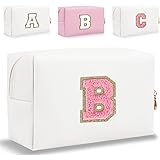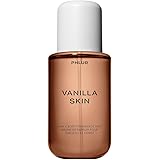The global fragrance market reached an estimated USD 50.8 billion in 2023, driven by consumer demand for both luxury and accessible scent experiences. Within this vibrant landscape, the quest for high-quality, affordable alternatives—often termed ‘dupes’—has intensified. As demonstrated in the video above, discerning consumers are actively evaluating whether budget-friendly options can truly replicate the complex olfactory profiles of their high-end counterparts. This exploration into Bath & Body Works dupes highlights specific instances where the brand either succeeds remarkably or falls short in its attempts to mimic iconic fragrances.
The Evolving Art and Science of Fragrance Duplication
Creating a successful fragrance dupe is a sophisticated endeavor, merging perfumery artistry with precise chemical engineering. Formulating a scent that mirrors another involves dissecting the target fragrance’s entire olfactory pyramid, identifying its core accords, and then sourcing equivalent or analogous raw materials. This process demands a deep understanding of molecular interactions, sillage, and longevity, ensuring the dupe not only smells similar upon initial application but also develops comparably on the skin over several hours. The challenge often lies in achieving a comparable complexity and depth without utilizing the same expensive, often proprietary, ingredients.
Consumer interest in fragrance dupes has surged due to several factors. High prices of luxury perfumes, the desire for variety without significant investment, and the pursuit of discontinued favorites all contribute to this demand. Manufacturers like Bath & Body Works tap into this market by offering accessible interpretations, often with a marketing angle that suggests a close resemblance to popular, more expensive perfumes. The performance of these dupes varies widely, as the video clearly illustrates with its direct comparison approach.
Decoding Aqua Hour: A Departure from Aqua di Gioia’s Aquatic Charm
The video’s initial comparison between Bath & Body Works’ Aqua Hour and Giorgio Armani’s iconic Aqua di Gioia Eau de Parfum offers a telling insight into the complexities of fragrance duplication. Aqua di Gioia is renowned for its vibrant, aquatic, and fresh floral profile, characterized by top notes of mint and lemon, a heart of jasmine, and a base of cedarwood, brown sugar, and labdanum. Its composition evokes the invigorating essence of the Mediterranean sea.
Conversely, Aqua Hour is described with notes of watery bergamot, fresh peony, and salty cedarwood. While these notes share some conceptual overlap with Aqua di Gioia’s fresh and woody elements, the video’s assessment was definitive: “No, not a dupe.” This outcome suggests a significant divergence in the overall olfactory impression. The specific balance of watery elements, the prominence of peony over jasmine, and the introduction of a distinct ‘salty’ cedarwood likely create a scent profile that, while pleasant in its own right, fails to capture the unique luminosity and sophisticated sweetness of Aqua di Gioia. Perfumers understand that even minor alterations in key molecules can drastically shift an entire fragrance’s character, leading to a mismatch despite apparent note similarities.
Guilty as Fig: An Unexpected Triumph Against Phlur’s Father Figure
In stark contrast to Aqua Hour’s performance, Bath & Body Works’ Guilty as Fig presented a surprising success as a dupe for Phlur’s Father Figure. Father Figure, a contemporary fragrance, is celebrated for its unique woody fig composition, often described as green, creamy, and sophisticated with notes of fig, cassis, iris, and sandalwood. It projects a modern, understated elegance, appealing to those who appreciate a less conventional, natural-leaning scent.
The video’s reaction — “Oh, shit. That’s, that’s exact” — underscores a remarkable achievement in replication. This indicates that Bath & Body Works’ perfumers managed to closely mimic the distinctive lactonic and verdant qualities of fig, combined with supporting woody and perhaps slightly earthy elements that define Father Figure. Achieving such precision, especially with a less ubiquitous note like fig, suggests a meticulous analysis of the original’s structure. The ability to source or create accords that accurately convey the creamy sweetness and green freshness of fig, along with its underlying warmth, is a testament to sophisticated formulation. This instance proves that effective dupes are not merely approximations but can indeed be near-identical matches, even if the personal preference of the reviewer didn’t align with the scent profile itself.
Madame Mystique: An Identical Match to Yves Saint Laurent’s Mon Paris Eau de Parfum
The most unequivocal triumph in the video’s evaluation arrived with Madame Mystique, hailed as an “Identical!” match for Yves Saint Laurent’s Mon Paris Eau de Parfum. Mon Paris is a modern classic, known for its dazzling chypre floral profile. Its signature blend features red berries, datura flower, white musk, and patchouli, creating a sweet, intoxicating, and undeniably romantic aura with significant sillage and longevity. It epitomizes a vibrant, passionate, and subtly addictive fragrance.
The declaration of Madame Mystique as “Identical!” suggests an exceptional feat of duplication. Replicating a complex composition like Mon Paris, with its distinct fruity top, narcotic floral heart, and musky patchouli base, requires an intimate understanding of each component’s role and how they harmonize. The white musk, a crucial element in Mon Paris, can be particularly challenging to replicate authentically due to its subtle yet pervasive nature. The success of Madame Mystique implies that Bath & Body Works has either gained access to very similar ingredient profiles or has expertly constructed analogous accords that faithfully render the original’s characteristic blend. Such a perfect dupe offers significant value to consumers who adore Mon Paris but seek a more budget-friendly alternative for everyday wear, further demonstrating the potential efficacy of Bath & Body Works dupes.
The Economic and Olfactory Impact of Fragrance Dupes
The existence of accurate Bath & Body Works dupes, alongside those that fall short, profoundly impacts the fragrance market. From an economic perspective, high-fidelity dupes democratize access to desired scent profiles, making luxury fragrance experiences attainable for a wider consumer base. Industry data suggests that consumers who initially purchase dupes may eventually explore the original luxury fragrance, underscoring a symbiotic relationship rather than pure substitution. The affordability of these alternatives also encourages experimentation, allowing individuals to explore different scent families and preferences without a substantial financial commitment. This trend indicates a shift where consumers prioritize the scent experience itself over brand exclusivity, particularly for everyday use.
From an olfactory standpoint, the varying success rates of these Bath & Body Works dupes highlight the nuanced challenges of scent replication. While some compositions, especially those with more common or readily reproducible accords, can be mimicked with remarkable precision, others prove elusive. Factors such as the rarity of certain natural extracts, the complexity of proprietary aroma chemicals, or the intricate layering of multiple facets contribute to the difficulty. The expert evaluation in the video provides valuable guidance for navigating this landscape, helping fragrance enthusiasts distinguish between genuinely comparable alternatives and mere conceptual similarities. Understanding these distinctions empowers consumers to make informed choices, optimizing their fragrance wardrobe with both luxury staples and intelligent Bath & Body Works dupes.











